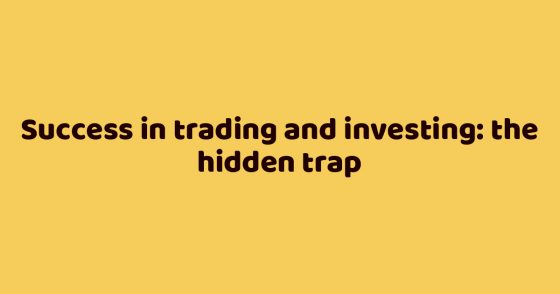Consider the cognitive bias or psychological trap that everyone faces.
A loss doesn’t exist until it’s recorded
Many people convince themselves that until their losing trades are closed, it is not a loss. You can also hear this from the big influencers. It seems logical for the “hold or die” philosophy that some in the cryptocurrency market have adopted.
After all, I’m going to hold until the end. And this is not about closing losing positions or using stop-losses, but about how we perceive the current loss. Apart from temporarily calming down, this setup does nothing useful.
So how does loss aversion hurt an investor?
– Inadequate appreciation of missed opportunities. You hold on to a losing position because you are still telling yourself that this is all temporary and that everything will turn your way soon. You miss out on good investment opportunities that you could have taken advantage of by simply accepting the loss.
– Wrong risk assessment and as a result the system is broken. You take a loss on a position and still focus on the amount in your account as if the loss is temporary. And you take a risk on the next trade that is not in line with your actual deposit. This story is about large losses. For example, you only risk 5% of your capital on each trade, relative to your risk management.
You have a deposit of $10,000, a variable loss of $3,000. But you still open positions with a risk of $500 because the current loss is not yet fixed.
– Psychological aspect: Trying to justify a bad trade by convincing yourself that it is not a loss can lead to a false sense of security and ignore the real risks. You will be overly positive about what is happening and wait patiently, even in situations where it is obvious that the market will continue to move against you for some time.
This means that there will be situations in which you would never buy this asset, but you will continue to sit in the trade because it is psychologically easier not to make a decision.
This is the main drawback. Not every crash turns out to be a manipulation, sometimes it’s just a token crash (LUNA and FTT are living examples). And for those who are short, sometimes even 100% in a day is not the limit of a token’s growth, even if it is not a meme coin, DWF with manipulation in CYBER and YGG is a great proof of that.
– If you have investors in your trade, not counting an unrecorded loss as a loss is a disaster.
Let’s remember the many examples in history of traders hiding losses until they grew to horrendous proportions: Nick Leeson at the Singapore International Monetary Exchange and $1.3 billion hidden loss, Jerome Kerviel: loss: $7.1 billion bank Société Générale.
If you consider the unrecorded loss to be the same as if you had closed a position, your decision-making state is closer to that when the position was not yet open, i.e. a more appropriate state without loss aversion and irrecoverable cost errors.








